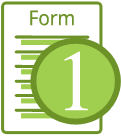September 3, 2010 (Shirley Allen)
The Federal Housing Administration’s (FHA) refinance program aimed specifically at homeowners who are “upside-down” begins on Monday September 7th. Participation and effectiveness remains to be seen, because like some of the other ‘bailout” programs qualifications and requirements could disqualify many who could benefit from the program.
The enhancements are designed to maintain homeownership for borrowers who are current on their mortgage but owe more on those mortgages than the market value of the home. Like most of the measures that have been undertaken to stem the flow of foreclosures and stop the collapse of the housing market, these changes rely to a great extent on the cooperation of a homeowner’s existing lenders who must be willing to write off at least 10 percent of the outstanding balance of a senior lien or relinquish or re-subordinate a junior lien position.
Participation in the voluntary program is limited to homeowners who, In addition to a negative equity position and being current on mortgage payments, must be the owner-occupant of a 1-4 family home used as the primary residence and not currently financed with an FHA guaranteed mortgage. The borrower must qualify for the new loan under current FHA underwriting guidelines which, among other criteria, require a “FICO-based” credit score of at least 500.
The requirement that the mortgage be current does not eliminate borrowers who have cured delinquencies. A borrower who has successfully completed the trial modification period under the Making Home Affordable Modification Program (HAMP) may close on one of the new loans the month following the conversion of his loan to permanent status. In the case of a non-HAMP modification, the borrower must have made three monthly payments on time and be paid-to-date at the time the loan is made.
The new FHA mortgage can have a loan to value (LTV) ratio of no more than 97.75 percent, and if junior liens are re-subordinated to the new loan, the combined indebtedness can not constitute more than a 115 percent LTV of the refinanced loan.
The new mortgage can be used only to refinance the unpaid principal balance on the first lien plus any prepaid interest for the month the mortgage is originated, prepayment penalties, late charges, escrow shortages, closing costs, prepaid expenses, and discount points. Any charges that would put the LTV above the levels described above would have to be written off by the mortgagee.
In underwriting the loan, lenders are not permitted to use premium pricing to pay off existing debt obligations in order to qualify the borrower nor are they allowed to make mortgage payments on behalf of the borrowers or otherwise bring the loan current in order to qualify for FHA insurance. The existing mortgagee is also prohibited from bringing its mortgage current except through an acceptable permanent loan modification.
For loans that receive a “refer” risk classification for TOTAL Mortgage Scorecard and/or are manually underwritten, the homeowner’s total monthly mortgage payment including mortgage payments, cannot be greater than 31 percent of gross monthly income and the total debt cannot be greater than 50 percent.
Under the program a junior lien holder would be eligible for a $500 cash incentive for extinguishing all claims on the collateral. If the junior lien holder merely agrees to re-subordinate his lien, then the subordination documents may not provide for a balloon payment within ten years from closing unless the property is sold or refinanced and must permit the borrower to prepay the loan without penalty with 30 days advance notice. Any required payments on the lien must be collected monthly and, unless any forbearance is for a period of at least 36 months, any payment must be included in the borrowers qualifying ratios.
The agency cites a HUD Regulatory analysis that concluded that at least one-half million people would take advantage of the enhancements in order to refinance although as many as three times that number is thought possible. The economic benefits of the program could be as little as $11.8 billion or as much as $35.3 billion.
FHA advises borrowers that their credit reports and credit scores might be damaged because of the principal forgiveness requirement and that they should also consult a financial advisor about any tax ramifications that might come from their participation in the program.




